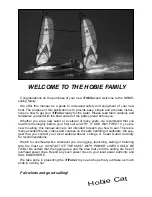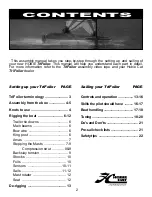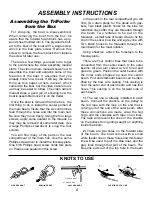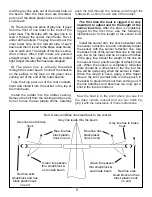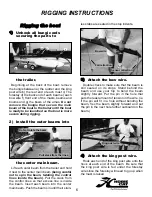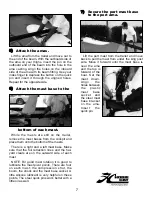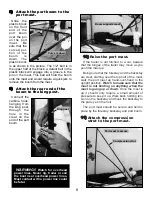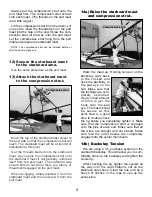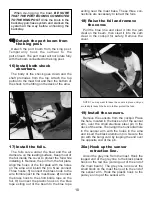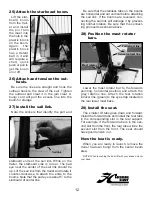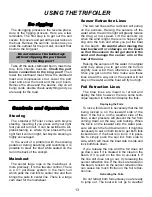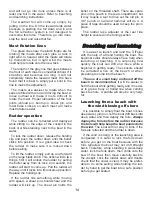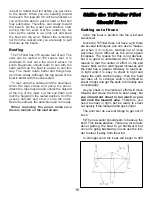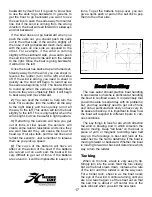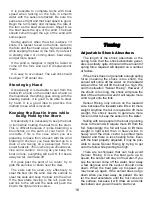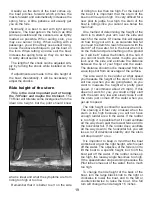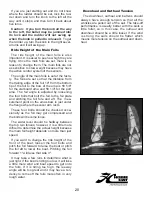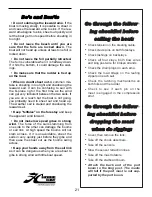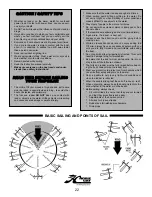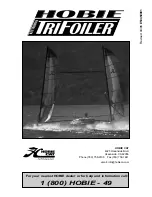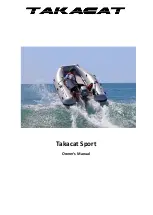
De-rrigging
The de-rigging process is the reverse proce-
dure of the rigging process. Here are a few
reminders. The first step is to get out the sail
covers, foil covers and put all the spar racks on
the boat. Remove the sail link. As soon as you
undo the outhaul for the port sail, connect that
boom to the king post.
Do not release the backstays
without clipping the port boom
to the king post!
Take off the sails, starboard boom, mast rota-
tors, foils, shocks, sensors.
Check the port
boom connection to the king post!
Then
lower the starboard mast. Stow the starboard
mast and compression strut. Lower the port
mast and stow the mast and the port boom.
Remove the amas and the beams. Clip on all
bungi cords, double check everything and you
are ready for the road.
Sensor Retraction Lines
The two red lines with a red knob will pull up
on the sensors. Raising the sensors off the
water when the wind is light will greatly reduce
the drag at low speed. Lift the sensors up
when the wind is light, there is no hope of get-
ting onto the foils and when you put the boat
on the beach.
Be careful when moving the
boat backward or sideways on the beach
so that the sensors do not get stuck in the
sand and damage the sensor arm or the
bow of the ama.
Raising the sensors off the water in marginal
wind may allow you to get onto the foils in
slightly less wind than otherwise possible.
Once you get onto the foils, make sure these
lines are all the way out or the sensor will not
stay on the water and the boat will fly too high.
Foil Retraction Lines
The blue lines are meant to retract and
deploy the foils; however, there is some tech-
nique required to retract and deploy the foils.
Deploying the Foils
To lock a foil down it is necessary that the foil
being locked is on the leeward side of the
boat. If the foil is on the weather side of the
boat, water pressure will prevent the foil from
coming down all the way and locking. When
the foil is on the leeward side, the water pres-
sure will push the foil down and in. It might be
necessary to sail on both tacks to get both foils
locked down. If the boat is in irons, it is possi-
ble to simply push the sail link from side to
side, which will move the boat side to side and
lock both foils down.
If you release the line and the foil does not
go down, see if it is cleated in the cleat on the
beam. If it is, pull on the line to un-cleat it. If
the line still does not go out, try releasing the
sensor retraction line. If the lines are twisted in
the beam, tension on the sensor retraction line
can cause too much friction on the foil retrac-
tion line.
Retracting the Foils
Do not retract both foils unless you are ready
to jump out. The boat will not go to weather
13
USING THE TRIFOILER
Controls and Operation
Steering
The standard TriFoiler comes with bicycle
steering, meaning if you press with your right
foot you will turn left. It can be switched to air-
plane steering, ie, where if you press with your
right foot it will turn right, but bicycle steering is
highly encouraged.
In the event of a problem with the steering
pedals or during beaching and launching it is
possible to steer the boat while seated on the
rail in the back of the cockpit.
Mainsheet
The center large rope is the mainsheet, or
more precisely, it is the traveler control. There
is a 4:1 purchase system in the main hull
which pulls the sail link to center line and thus
brings the sails to center line. There is a large
cam cleat for the mainsheet.
Summary of Contents for TriFoiler
Page 1: ...ASSEMBLY MANUAL...


